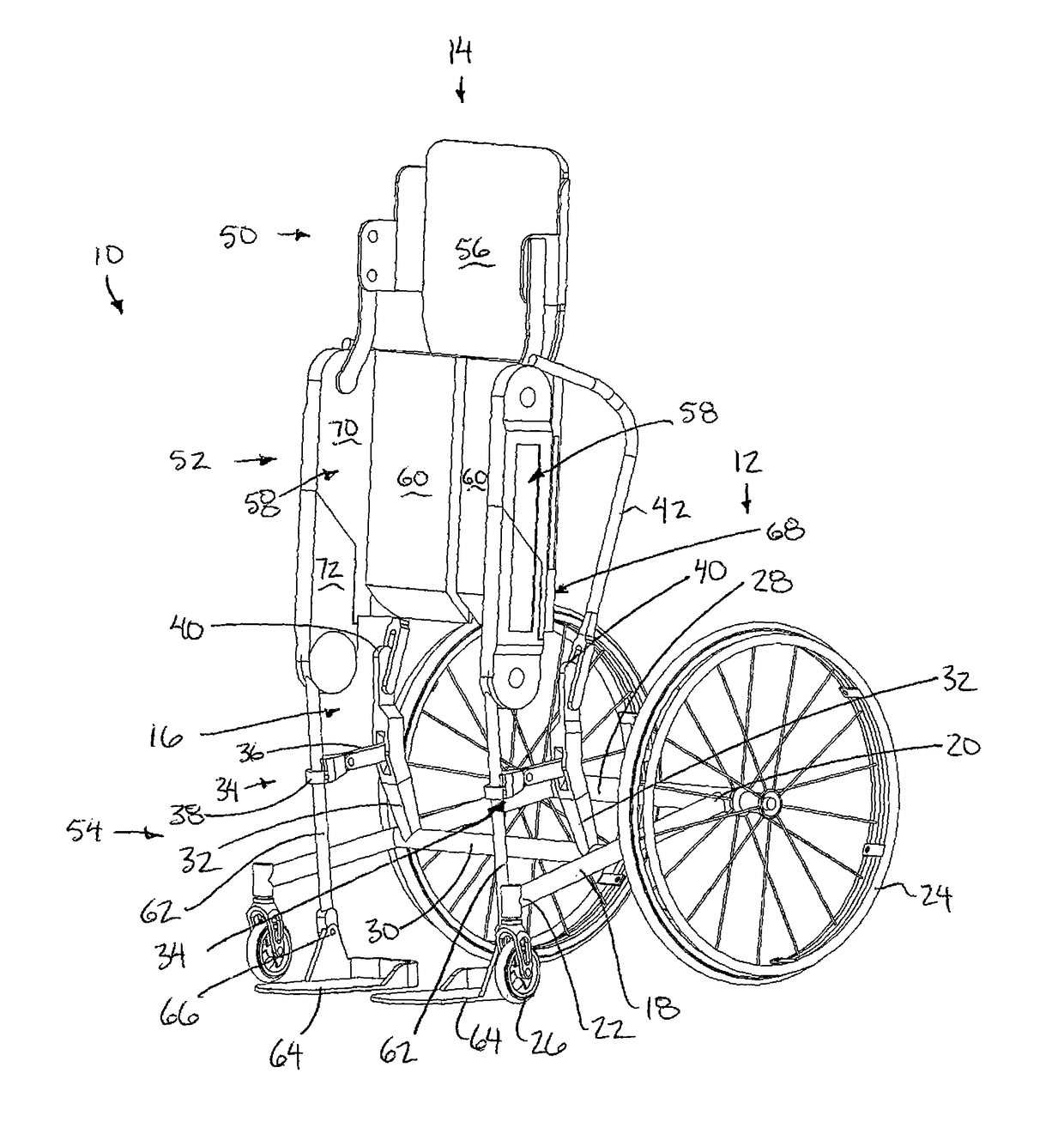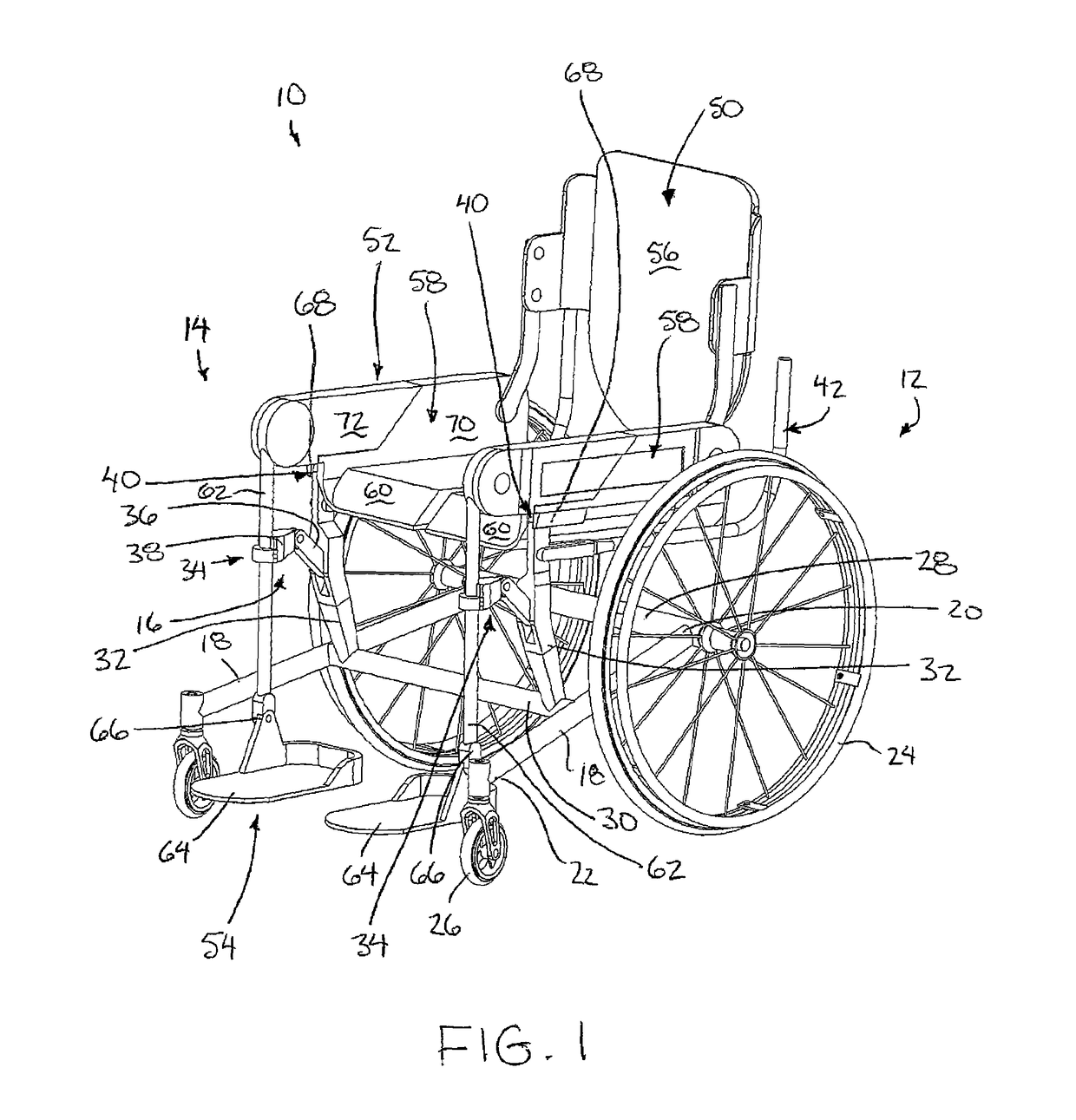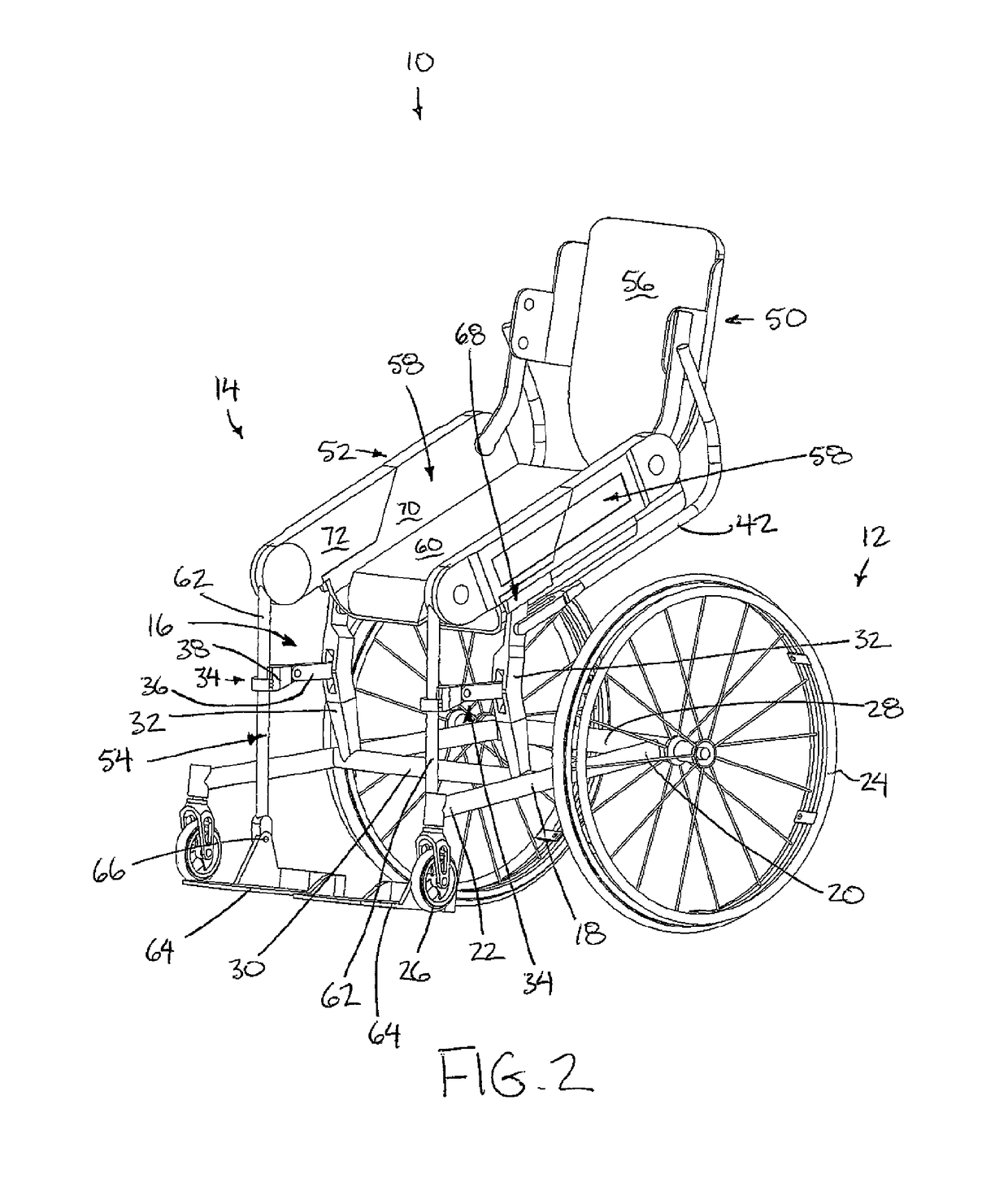Mobility system including an exoskeleton assembly releasably supported on a wheeled base
a technology of exoskeleton and wheel base, which is applied in the field of mobility system, can solve the problems of limiting the use of conventional wheelchairs, simply not being transformative, and limiting their use as general purpose daily mobility devices, and achieve the effect of facilitating normal activities of daily living
- Summary
- Abstract
- Description
- Claims
- Application Information
AI Technical Summary
Benefits of technology
Problems solved by technology
Method used
Image
Examples
first embodiment
[0148]Docking of the exoskeleton assembly relative to the wheeled base is accomplished in the lower docking members by initially engaging a first one of the clamps 38 of the lower docking members to a respective one of the lower leg members of the exoskeleton assembly. Each lower leg member is arranged such that the clamp permits relative pivotal movement about a vertical axis between the exoskeleton assembly and the wheeled base when the other clamp remains released. This permits ease of alignment of the second clamp 38 with the other lower leg member once one clamp has been engaged into a coupled position.
second embodiment
[0149]In the lower docking members, the clamps on the exoskeleton can be actuated to clamp onto the link members on the wheeled base to initially allow relative pivotal movement therebetween. Each clamp on the exoskeleton can similarly provide relative pivotal movement between the wheeled base and the exoskeleton about a generally vertical axis when the other clamp is released.
[0150]In all of the illustrated embodiments of FIGS. 1 through 23, the coupling of the two lower leg members is typically accomplished while the exoskeleton assembly remains in a standing position. In the standing position of the exoskeleton assembly relative to the wheeled base, the docking assembly provides connection only by the engagement of the lower docking members on the wheeled base with the lower leg members of the lower portion of the exoskeleton assembly. The connection of the lower docking members remains coupled and engaged throughout the pivotal movement of the exoskeleton assembly between sittin...
PUM
 Login to View More
Login to View More Abstract
Description
Claims
Application Information
 Login to View More
Login to View More - R&D
- Intellectual Property
- Life Sciences
- Materials
- Tech Scout
- Unparalleled Data Quality
- Higher Quality Content
- 60% Fewer Hallucinations
Browse by: Latest US Patents, China's latest patents, Technical Efficacy Thesaurus, Application Domain, Technology Topic, Popular Technical Reports.
© 2025 PatSnap. All rights reserved.Legal|Privacy policy|Modern Slavery Act Transparency Statement|Sitemap|About US| Contact US: help@patsnap.com



